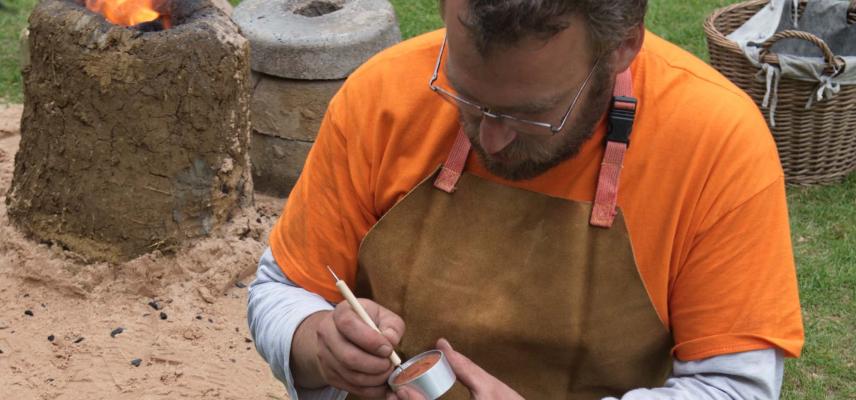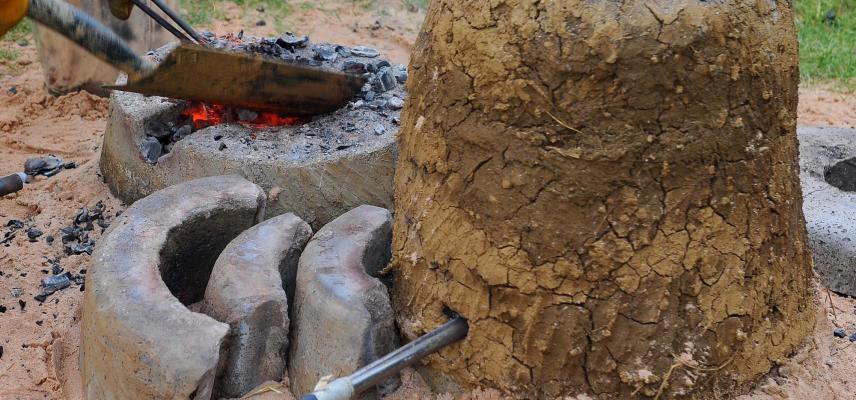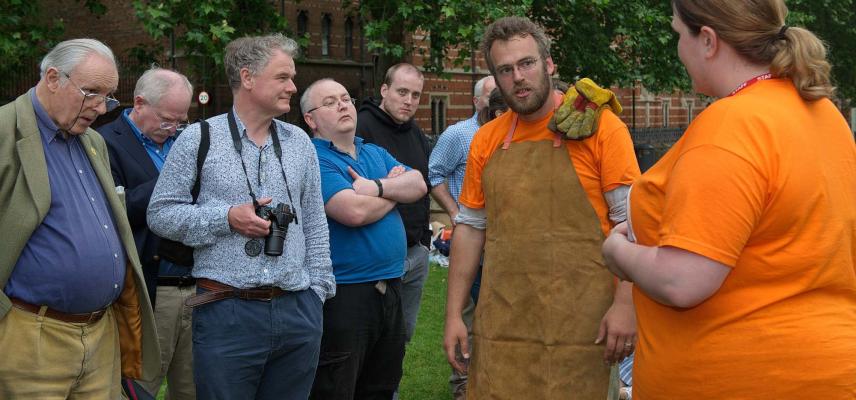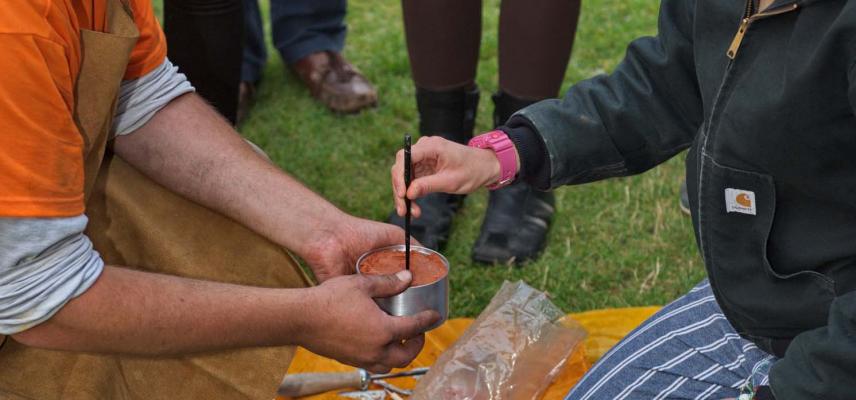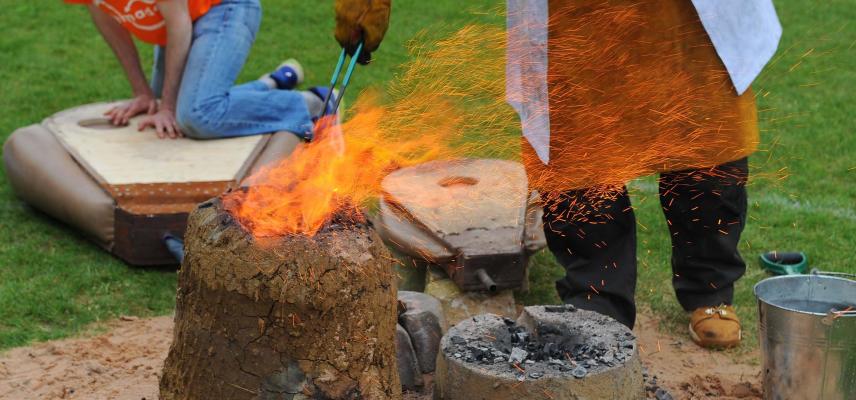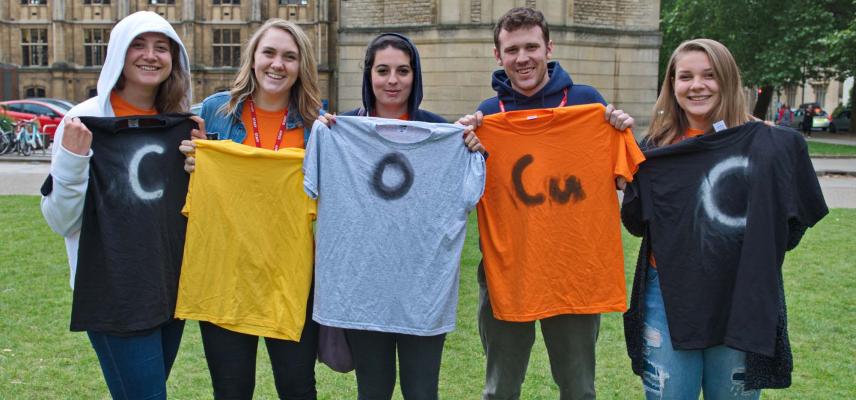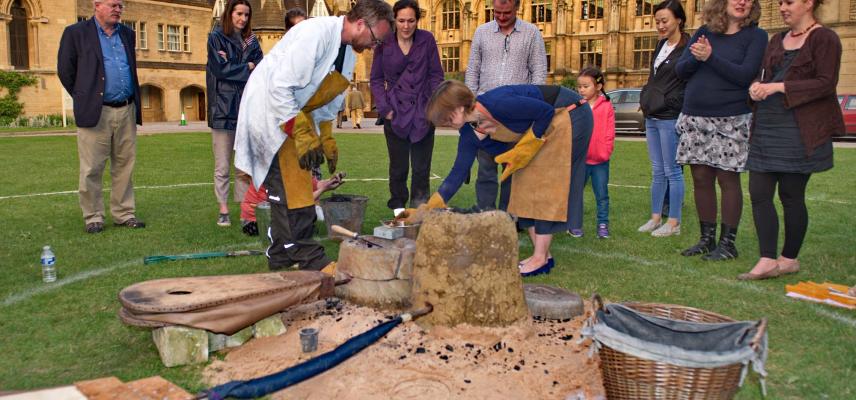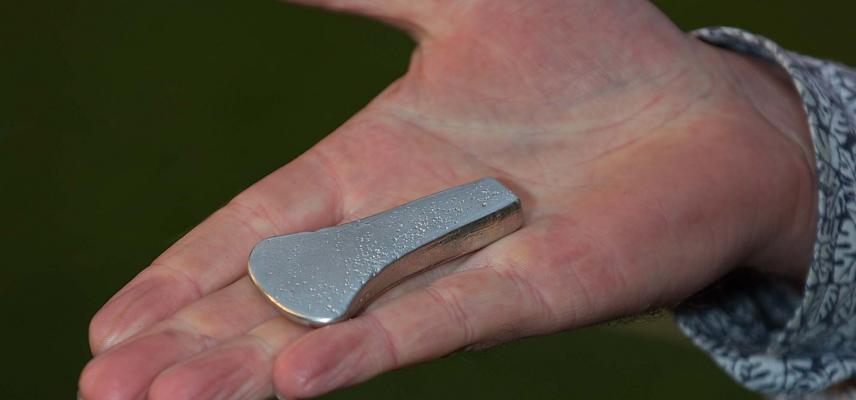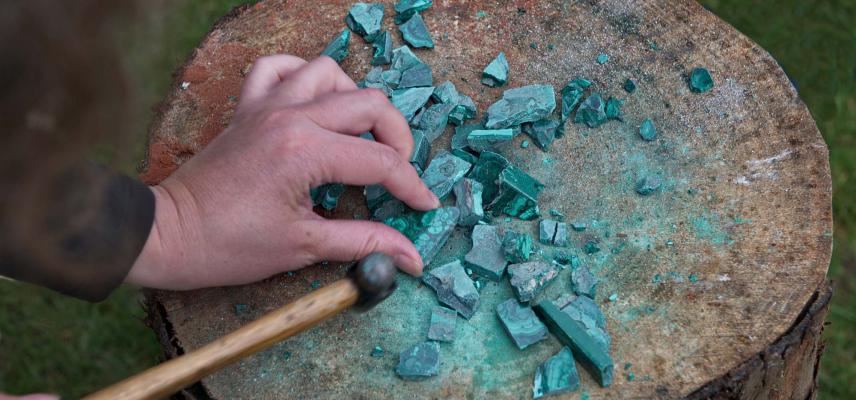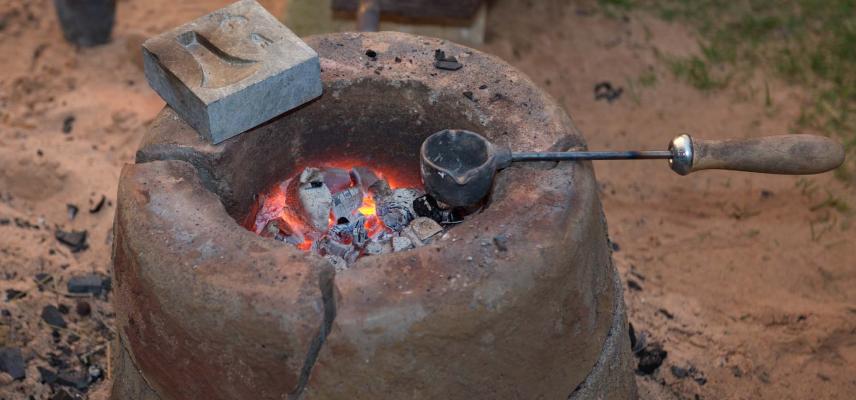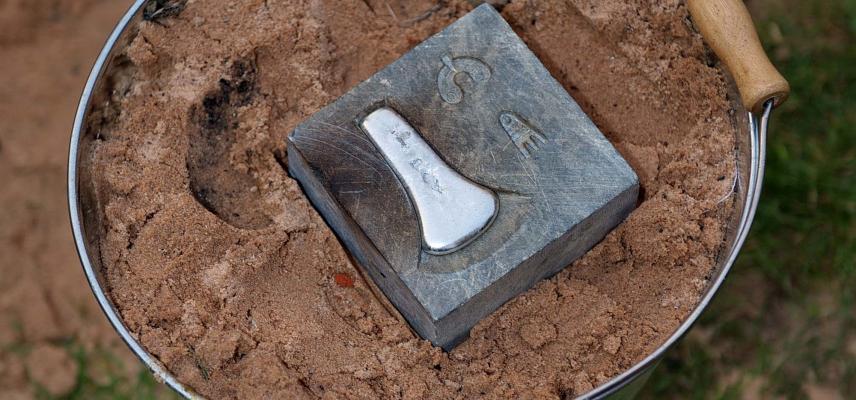From Mine to Metal
In June 2018, two researchers from the University of Oxford School of Archaeology’s Flow of Ancient Metals Across Eurasia (FLAME) project – Dr Peter Hommel and Samantha Bowring – led a team taking over the Pitt Rivers Museum for the day. Titled ‘From Mine to Metal’, their hugely popular takeover saw a series of activities designed to introduce members of the public to various aspects of ancient metallurgy, the history of archaeometallurgy, and the direction of current research in Oxford.
The day was funded by a University of Oxford Public Engagement with Research Seed Fund grant (with additional support from Studiocanal, Aardman Animations and The Oxford Charcoal Company), and was based in and around the Pitt Rivers Museum. Highlights included the chance to handle minerals, ores and real archaeological artefacts, with experts available to answer questions. Dr Robert Knight from the Museum of Natural History lent handling objects so that visitors had the chance to see native copper, sky-iron, and experience the varied colour of ores. Visitors also explored the history of archaeological analysis through a range of materials loaned from the Coghlan and Tylecote archives.
In addition, there were arts and crafts, prehistory-themed colouring, and a chance to win a range of Early Man themed goodies (courtesy of Aardman and Studiocanal). Meanwhile, the Pitt Rivers lecture room was transformed into a Bronze Age mine, where those that dared crawled through dark and bumpy tunnels lit only by glowworms and the ethereal glimmering of the tunnels’ walls. Visitors challenged themselves to enter in search of the metallic ores hidden in the depths, winning a chance to be entered into a prize draw for more Aardman goodies. Participants were mostly children with or without their accompanying adults. However, we had a few unaccompanied adults too! Once they had entered, these older participants unwittingly demonstrated why the FLAME research team think children would have been such an integral part of most ancient mining operations; it often took several minutes for adults to struggle back out!
Throughout the day, Dr Hommel and Dr Chris Green tirelessly demonstrated the process of smelting, transforming malachite into copper, and casting and recasting small objects to demonstrate one of the most magical properties of metal. This was an incredibly popular spectacle with many visitors returning staying to watch the whole process and even returning later in the day to see different stages of it. Over the course of the day, just under half a kilo of copper was produced and distributed among the intrigued audience.
In the evening, a smelting and casting session aimed at adults and teenagers took place. Members of the public had a chance for some hands-on experience, pumping bellows and casting their own small axe heads. Adult visitors were as enthralled as the younger daytime audience, proving that well-designed public engagement with research activity can inspire audiences of all ages.
Dr Peter Hommel, the lead researcher for From Mine to Metal discussed the event as the University of Oxford’s inaugural Public Engagement with Research Conference. Watch a short video of Dr Hommel speaking here.


